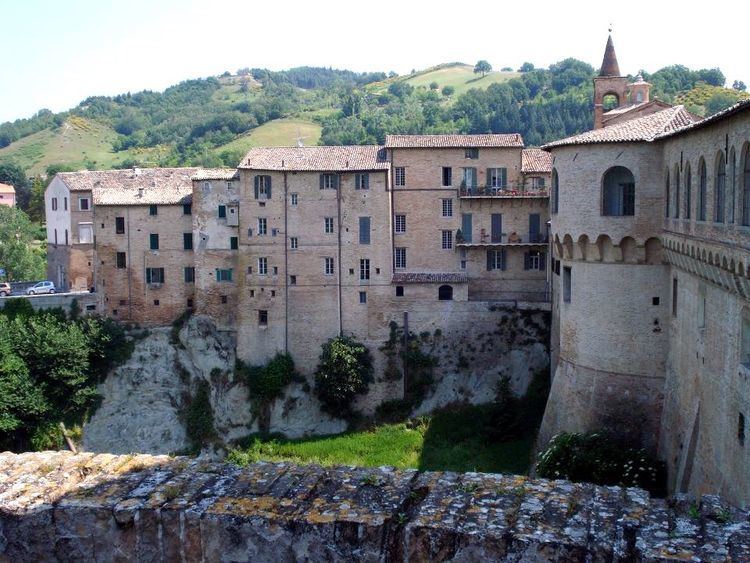Demonym(s) Urbaniesi, Durantini Local time Monday 12:51 AM Patron saint Saint Christopher | Elevation 273 m (896 ft) Area 77.8 km² Postal code 61049 Dialling code 0722 | |
 | ||
Frazioni Barca, Campi Resi, Campolungo, Gualdi, Muraglione, Orsaiola, Ponte San Giovanni, San Lorenzo in Torre, San Vincenzo in Candigliano, Santa Maria del Piano, Santa Maria in Campolungo, Santa Maria in Spinaceti Weather 12°C, Wind E at 8 km/h, 92% Humidity Points of interest Palazzo Ducale, Bosco dei folletti, Museo Di Storia Dell'agric | ||
Urbania is a comune (municipality) in the Province of Pesaro e Urbino in the Italian region of Marche, located about 80 kilometres (50 mi) west of Ancona and about 40 kilometres (25 mi) southwest of Pesaro, next to the river Metauro.
Contents
Map of 61049 Urbania, Province of Pesaro and Urbino, Italy
Urbania borders the following municipalities: Acqualagna, Apecchio, Cagli, Fermignano, Peglio, Piobbico, Sant'Angelo in Vado, Urbino.
It is a famous ceramics and majolica production centre. In recent years, it has become more closely associated with the Befana folk tradition.
History
Originally known as Castel delle Ripe, it was a free commune of the Guelph party. In 1277 it was destroyed by the Ghibellines, then rebuilt by the Provençal Guillaume Durand in 1284 and christened Castel Durante. Later it was ruled by the Brancaleoni family. When the latter were ousted, the city offered itself to the Dukes of Urbino, who used the palace in the city as summer residence and had it restored by architects such as Francesco di Giorgio Martini. The last della Rovere duke, Francesco Maria II, is buried in the Ducal Palace of Urbania.
In 1631 it became part of the Papal States. Five years later its name changed to the current one, in honor of Pope Urban VIII.
On 23 January 1944 Urbania was bombed by the Allies, resulting in the deaths of 250 civilians. It was a Sunday so the people had gathered in the town, increasing the number of victims.
After World War II Urbania received the Bronze Medal for Military Valour for the deeds of its citizens during the partisan warfare.
Main sights
Trivia
Urbania features as the main setting of Ci Siamo (ISBN 1-86391-109-X) a textbook for students of Italian used by many Australian students in the middle years of high school.
